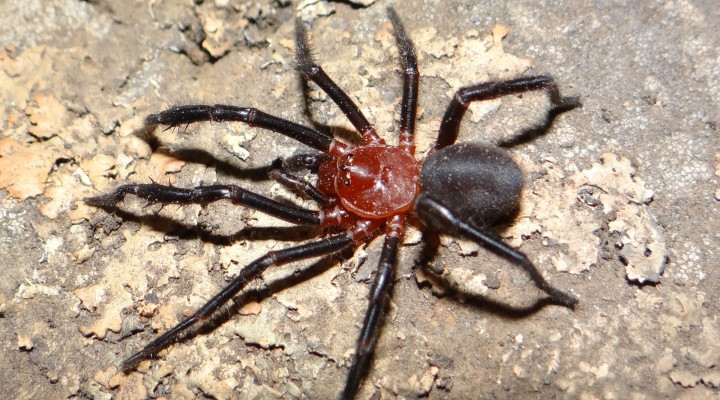INSTITUTIONAL NEWS
Scientists are concerned about the preservation of a rare spider of the range of Buenos Aires
Its habitat can be threatened by the invasion of exotic species, tourism and agricultural and livestock activities.
It is one of the “bricklayer spiders” that only inhabits the range systems of Ventania and Tandilia. CONICET scientists suspected that the habitat of these spiders can be threatened by an invasion of exotic species, tourism, and agricultural and livestock activities.
The “bricklayer spiders” [Calathotarsus simoni] are some of the most enigmatic species of the Argentine fauna: one species was described for the first time in 1975 and they had only been observed occasionally in specific regions of the range system of Ventania and Tandilia, in the province of Buenos Aires. Now, detailed analyses of the habitat of these arachnids suggest that they are exposed to environmental threats that could reduce their population or even affect their survival in the coming years.
“The specific role of this species within the ecosystem is still a mystery but it’s important to consider that several spiders act as natural controllers of plague insects”, stated Nelson Ferreti. He works at the Centro de Estudios Parasitológicos y de Vectores (CEPAVE), which is under the scope of the National Scientific and Technical Research Council (CONICET) and the Universidad Nacional de La Plata (UNLP).
The bricklayer spider, whose scientific name is Calathotarsus simoni, is called that way because it builds caves in which they hide slyly during the day. This spider has nocturnal habits and it is about 12 to 20 millimeters long so it is not easy to find, even for the experts. Despite the fact that the males have a particular reddish orange color, they are even more difficult to visualize or capture because their life expectancy is shorter. In a recent campaign, the researchers found 30 adult specimens and they were all female.
In the new study, published in the Biodiversity Data Journal, Ferreti and his colleagues collected all the information about the species and noticed that the bricklayer spiders inhabit exclusively in places of both range systems that have certain environmental characteristics: they are humid places located in steep slopes, at 500 and 1500 meters above the sea level, and where there are certain species of mosses on the substratum where they built their caves. Considering the four areas in which these spider’s populations were found, the area they occupy is only 16 kilometers.
“The area where this species lives is very small. And if they happen to be under some degree of threat, the future of the populations can be jeopardized, what can lead to their extinction”, Ferrari said.
For the researchers, the factors that threaten these spiders are the invasion of their habitat by pines and other exotic species like animals and vegetables or the modification of the environment performed by urbanization, tourism, agriculture and livestock.
Ferreri said that the following step is to categorize the species according to the rules of the International Union for the Conservation of Nature (IUCN), so as to better monitor the evolution of these populations and implement actions for its conservation.
Other scientists who participated in the study were: Gabriel Pompozzi, CONICET’s fellow at the Instituto de Ciencias Biológicas y Biomédicas del Sur (INBIOSUR, CONICET-UNS) and member of the IUCN; and Pedro Cardoso of the Finnish Museum of Natural History of Helsinki, and member of the IUCN.
Agencia CyTA-Instituto Leloir.
